Nature and Sports: Hiking-Biking-Aquatic sports
Dénia is surrounded by natural spaces such as the beaches and coves of the Costa Blanca along the Mediterranean Sea, the Montgó Natural Park, and the Cap de Sant Antoni Marine Reserve. These areas are ideal for hiking, biking, and water sports. Consult in the link the best hiking trails in Dénia, also shown here. For bikers, find information in these links: bike rentals in Dénia and the best biking routes around.
El Montgó Natural Park
El Montgó Natural Park headquarters are located in Dénia, in the Interpretation Center of El Montgó Natural Park, inside the farm of Bosc Diana: Camí de Sant Joan, 1, with free parking available. Here you can find an accessible exhibition with information on the ecosystems of El Montgó and the Natural Reserve of the seabed of Cap de Sant Antoni, the main routes, traditional uses and offers of activities for visitors.
El Montgó, a mountain 753 m high, is a Natural Park that extends to the Cap de Sant Antoni (Cape Saint Anthony) and its cliffs measuring about 150 meters high. The Park has an area of 2,117 hectares. It is located between Dénia and Jávea (Xàbia) and is home to more than 650 species of flora and vegetation. The fauna in the Park is linked to the plant communities that develop there.

El Montgó
Hiking
The Park offers routes of different difficulty and stunning views. Among the most accessible trails is the Camí de la Colonia (a former failed agricultural colony founded to grow muscatel grapes), about 5 km long and with low difficulty, which begins at the Pare Pere (Father Peter) hermitage and ends at the Cova del Gamell (Cave of Gamell) crossing a landscape of almond trees and enjoying excellent views of the sea. Another slightly more complicated route (3 hours), with several climbs, is the one that starts at the Pare Pere (Father Peter) hermitage passing by the emblematic Cova de L’Aigua (Cave of the Water) and ending at Racó del Bou (Ox’s Corner). More difficulty has the climb to the summit of El Montgó, starting from several points such as the Dénia Shooting Range and overcoming a difference in altitude of 500 metres.
These routes can be completed with spectacular visits such as the Cueva Tallada (Carved Cave) and the Torre del Gerro (Jar Tower) a XVI century watchtower built to prevent attacks by Barbary pirates, named after its jar form. In some periods visits to the Cueva Tallada require a permit online. These can also be reached continuing the path from Dénia to Les Rotes along the coast, next to the rocky coves. These waters were declared Marine Reserve. The lighthouse of Cap de Sant Antoni is also located in the Natural Park.
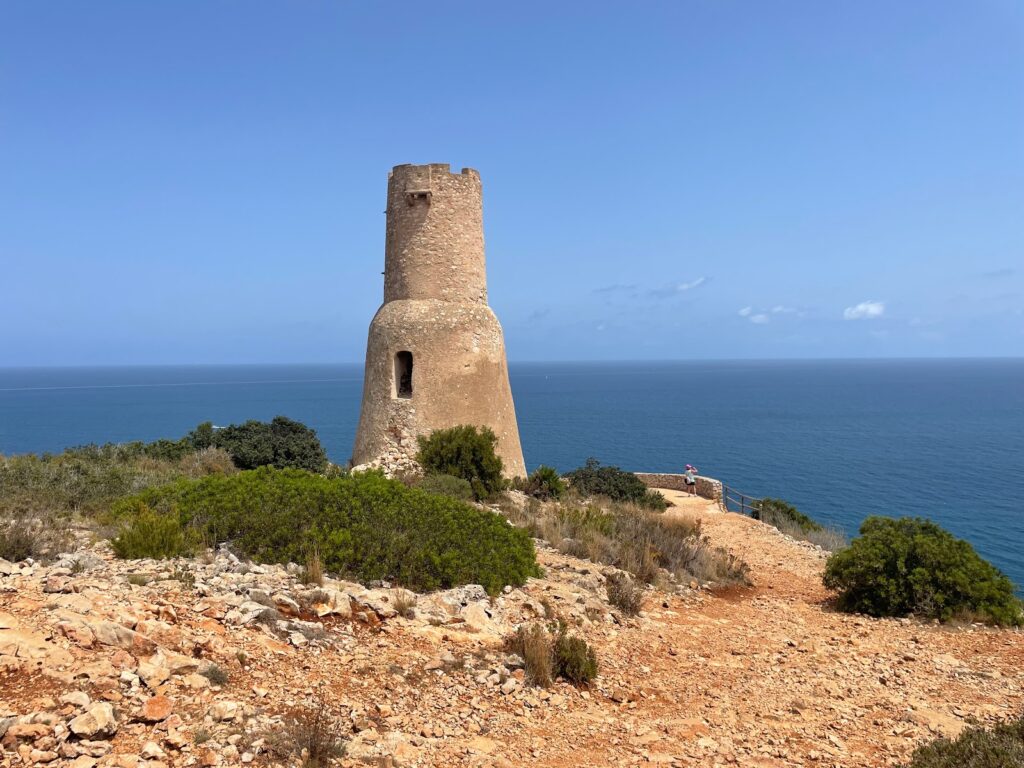
Torre del Gerro

Cueva Tallada (Carved Cave)
Appart from those at El Montgó, you will find trails such as the Greenway (Camino Verde), which runs between orange and almond trees; and beautiful countryside roads that hide smaller local entities of Jesús Pobre and La Xara.
Birding
Bird watching is possible at El Montgó. Birding is the observation of both migratory and indigenous birds in the environment they live in. The cliffs in the area serve as shelter for many species, including birds of prey such as Bonelli’s eagles, Peregrine falcons and eagle owls. Eurasian magpie (Pica pica melanotos) and Raven (Corvus corax) are the dominant species on the rocky outcrops. A pair of Bonelli’s eagles (Aquila fasciata ex Hieraaetus fasciatus) breeds here, and there are several pairs of the largest owl in Europe (Eurasian Eagle Owl, Bubo bubo) that nest here. This impressive nocturnal bird of prey has a wingspan of between 160 – 188 cm, distictive orange eyes and it hunts small mammals, mainly rabbits. They also eat rats, hedgehogs and medium-sized birds, and in this area, gulls too. In the groves and pine forests we might come across the common crossbill (Loxia curvirostra), tawny owls (Strix aluco) and various species of tit (great tit, coal tit, and Eurasian blue tit).
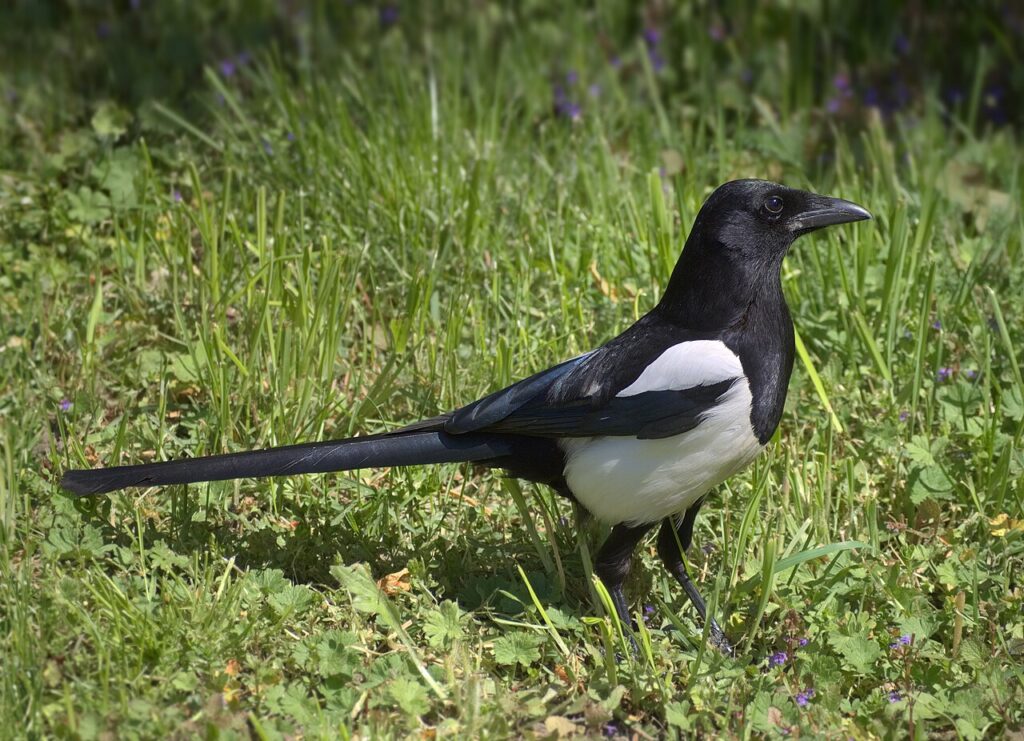
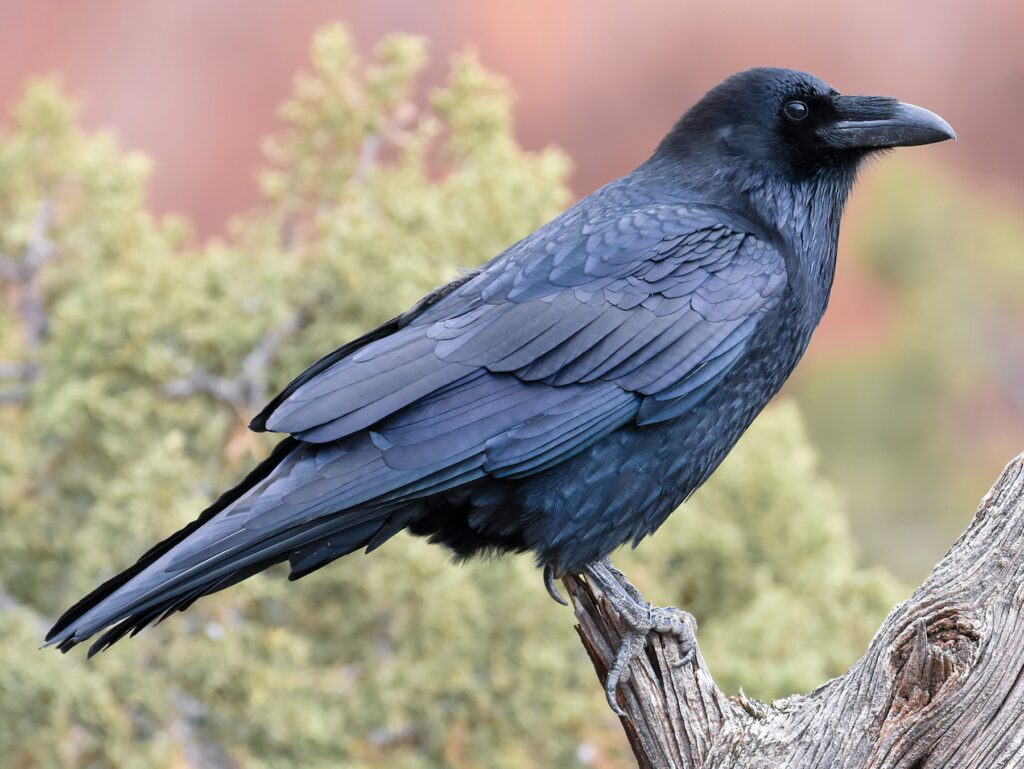
Pica pica melanotos
Eurasian magpie
Corvus corax
Raven
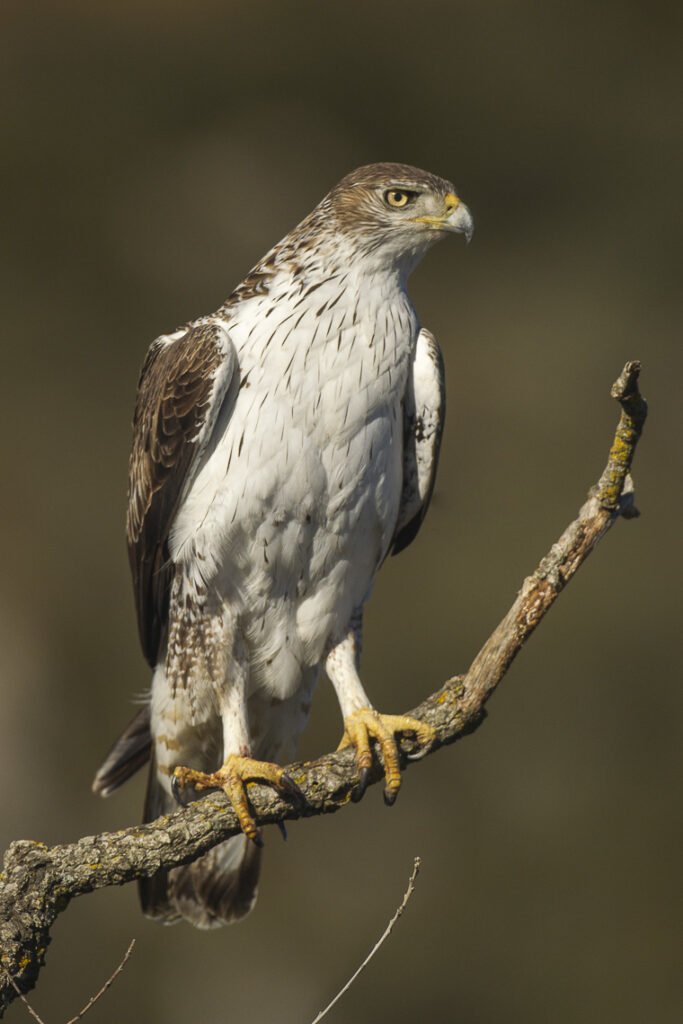
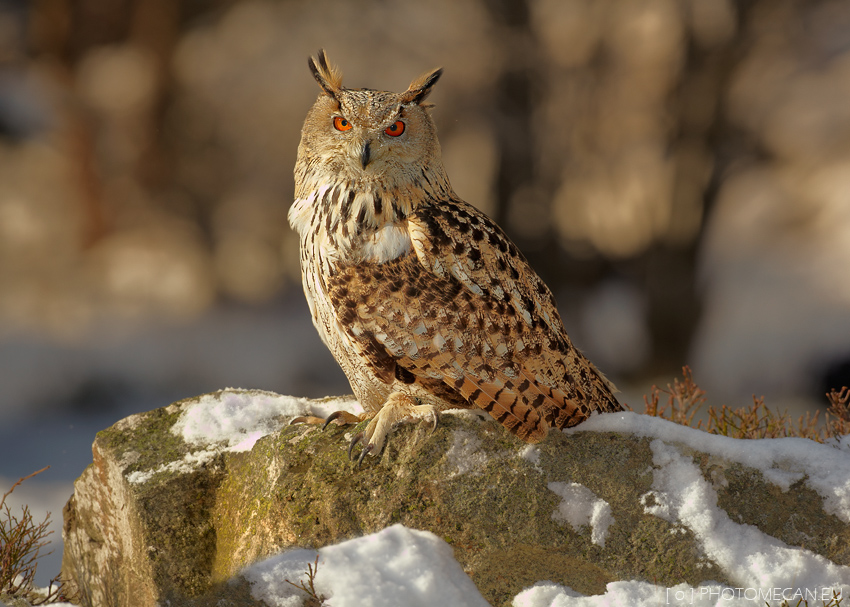
Aquila fasciata
Bonelli’s eagle
Bubo bubo
Eurasian Eagle Owl
Flora
The flora in El Montgó include the typycal species of the Mediterranean scrub such as mastic trees (Pistacia lentiscus), kermes oaks (Quercus coccifera), steppes (Cistus sp.), sarsaparilla (Smilax aspera), toothed lavender (Lavandula dentata) and orchids of various genera. The pine trees in the park come from repopulation. There is a clear differentiation in the flora of the sunny and shady areas that are so clear on El Montgó, with the great distinctions between the north and south faces. Some of the most representative plant species are: the communities of sabina negra (Juniperus phoenicea); sea fennel (Crithmum maritime); and marine juniper (Juniperus oxycedrus subsp. macrocarp).
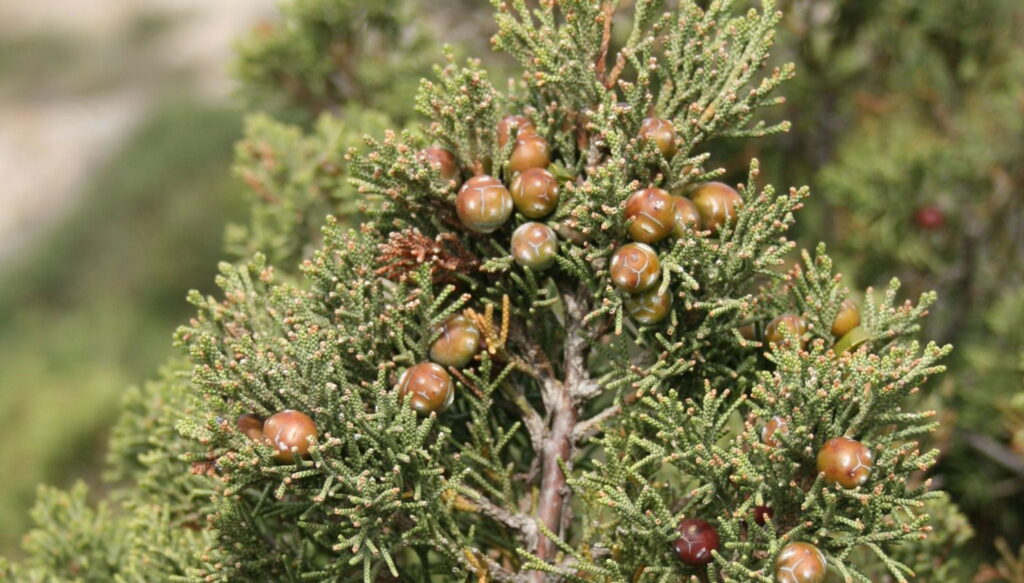

Juniperus phoenicea
(Sabina negra)
Juniperus oxycedrus subsp. macrocarp
(Marine Juniper)
Some places have a fairly humid and cool environment, except in the summer months where It is common to find ferns such as the polypodium (Polipodium cambricum) or plants such as the butcher’s broom (Ruscus aculeatus), and many others typical of the humid areas of the Mediterranean mountains. Noteworthy is the endemic rock vegetation such among others: the Rock thistle (Carduncellus dianius) or “herba santa” (Holly herb); the rock horseshoe (Hippocrepis valentina) or “desferracavalls“; or the rock scabious (Scabiosa saxatilis). Other representative plant species are: Silene de Ifach (Silene Ifacensis) and Always alive (Limonium rigualii). In the shady and more humid areas there are communities of black juniper and palmetto.


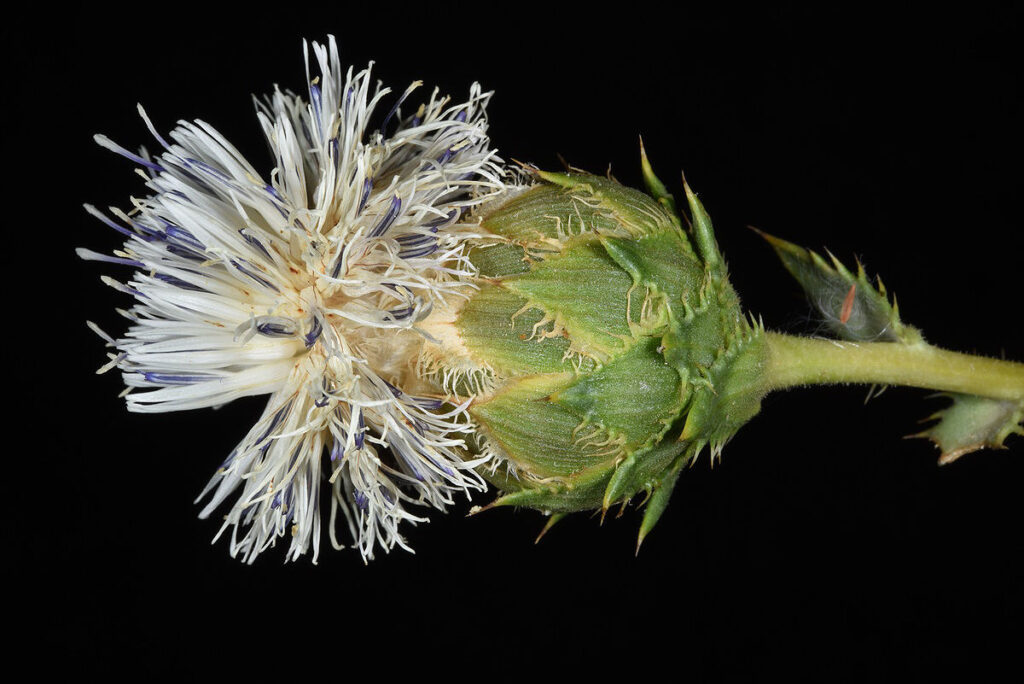
Hippocrepis valentina
(Rock horseshoe)
Crithmum maritime
(Sea fennel)
Carduncellus dianius
(Rock thistle or Holly herb)
Review the plants growing in each landscape unit here (see section 6.3.1 in this link). It is important to remember that El Montgó has micro-reserves of flora and that the plants here are strictly protected.
Aquatic and Beach Sports
Aquatic sports can be practiced in Les Deveses beach and other beaches. You can go kayaking, jet ski, paddleboarding, windsurfing, kitesurfing, flyboarding or discover the fascinating underwater world during a scuba or snorkel diving trip.

